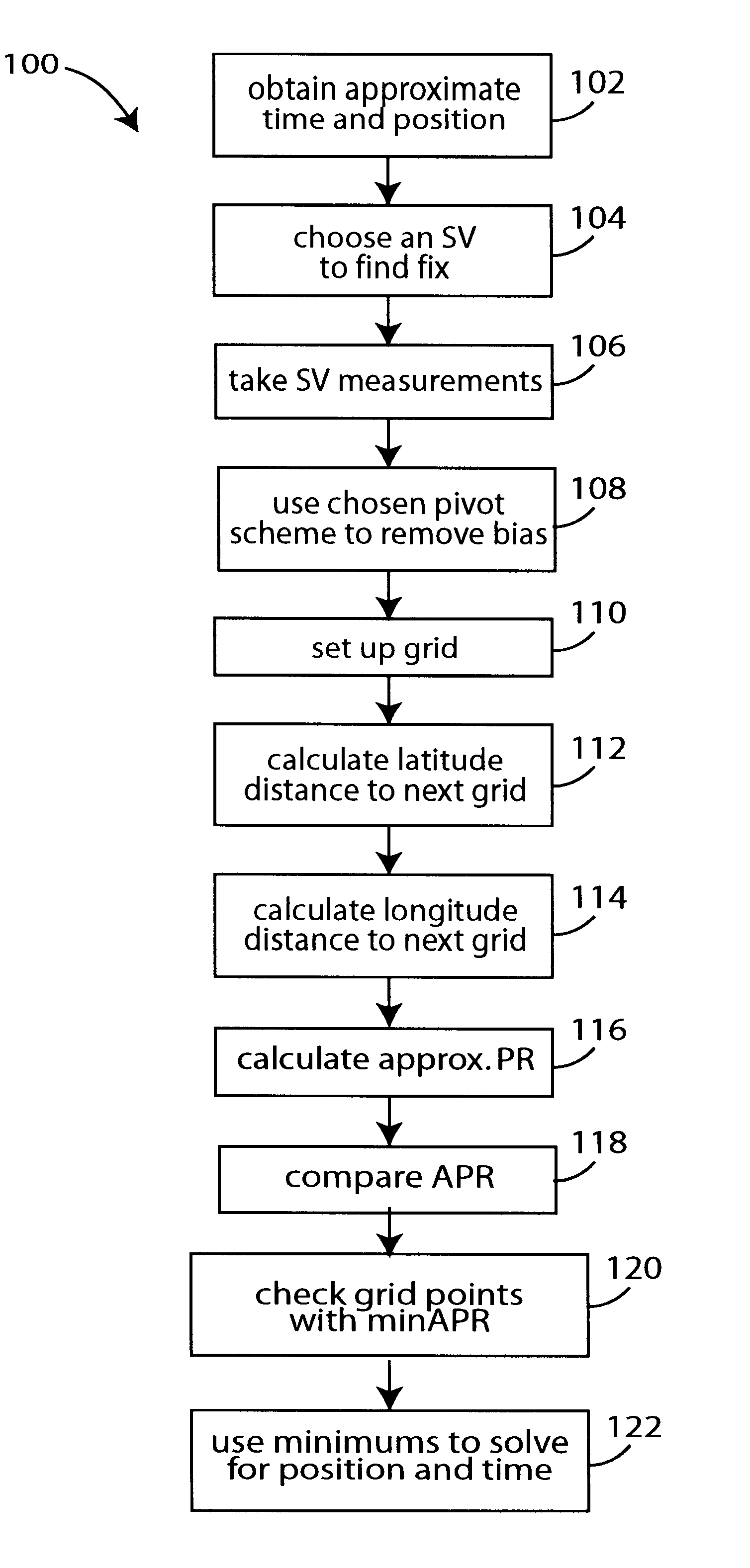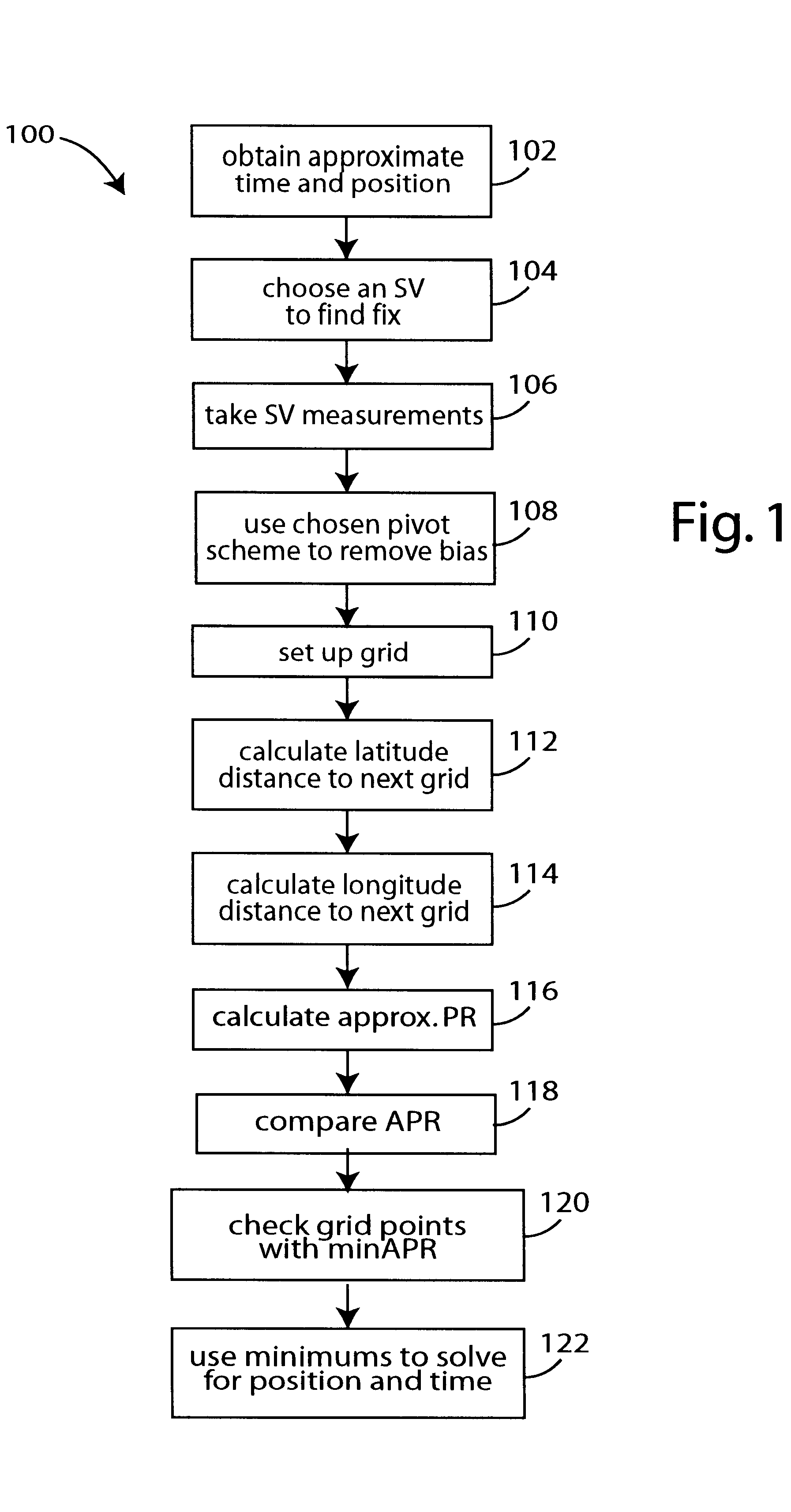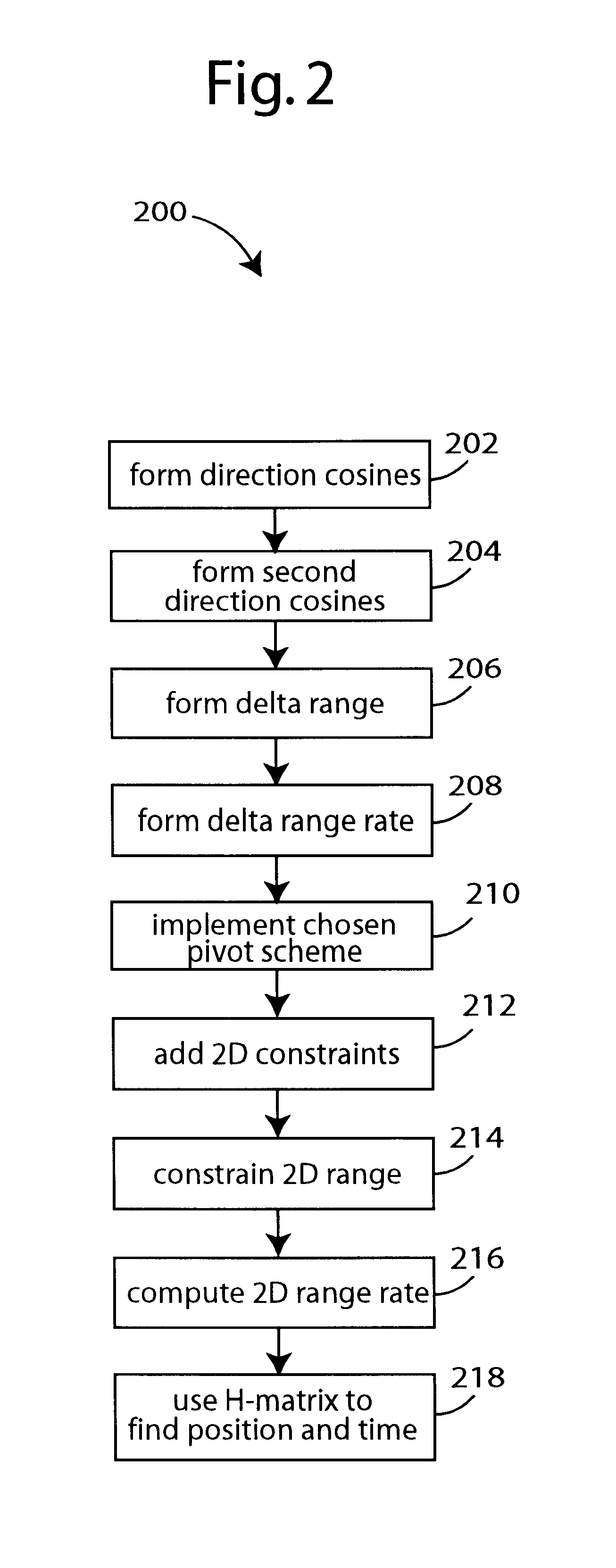Method and system for position calculation from calculated time
a technology of calculated time and method, applied in the field of navigation satellite receivers, can solve the problems of insoluble problems, inability to solve receiver coordinates, and inability to collect a few epochs of data
- Summary
- Abstract
- Description
- Claims
- Application Information
AI Technical Summary
Benefits of technology
Problems solved by technology
Method used
Image
Examples
Embodiment Construction
In general, a navigation-satellite receiver embodiment of the present invention comprises means for initialization that gets a head start by knowing time to within a few seconds and position to within 150 kilometers. A two-dimensional grid of points is setup with constant altitude that represents solution starting points within the 150 kilometer area. Fractional pseudoranges from each satellite in a constellation are inspected for a best initial fit with the points in the grid. A variety of time bias adjustments within the time bounds are also tried against the points to find a best fitting point. That point then is used in a drive to find the final solution and to produce the first fix from cold start.
In FIG. 1, a first method embodiment of the present invention for initializing a GPS receiver begins by assuming time is correctly known to within a few seconds, and the user's position is correctly known to within 150 kilometers from the true position. A method 100 begins with a step...
PUM
 Login to View More
Login to View More Abstract
Description
Claims
Application Information
 Login to View More
Login to View More - R&D
- Intellectual Property
- Life Sciences
- Materials
- Tech Scout
- Unparalleled Data Quality
- Higher Quality Content
- 60% Fewer Hallucinations
Browse by: Latest US Patents, China's latest patents, Technical Efficacy Thesaurus, Application Domain, Technology Topic, Popular Technical Reports.
© 2025 PatSnap. All rights reserved.Legal|Privacy policy|Modern Slavery Act Transparency Statement|Sitemap|About US| Contact US: help@patsnap.com



